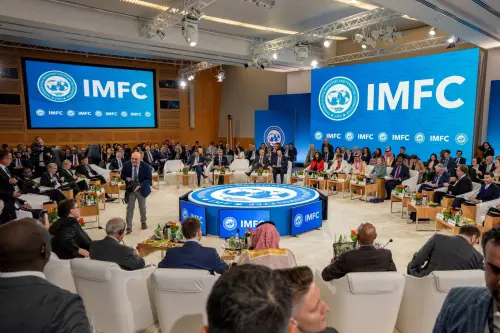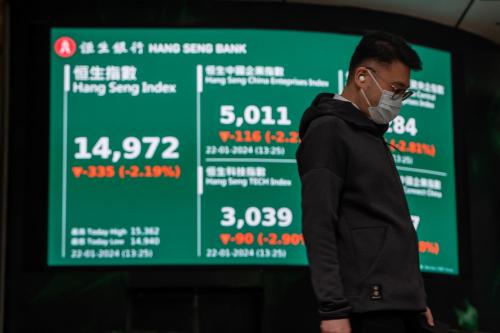The sharp jump in the prices of food, energy and commodities in 2008 inevitably brings back haunting memories of the 1973 OPEC price shock and the 1972-75 generalized commodity boom that were followed by a protracted period of stagflation. Is history repeating itself?
In my opinion, the causes of the present burst in global inflation are sufficiently different from the past that policymakers will have to be more imaginative and use new policy recipes. The subprime crisis, the surge in commodity prices, the rise in core inflation, and the slowing of the US economy were produced by the interaction between inept economic management and several independent trends, such as Asia’s emergence as a major economic power.
Ironically, unlike the 1970s, the making of the present global economic mess was greatly helped by positive supply shocks. The productive capacity of the global economy has been greatly increased beginning in the 1990s by the integration of the underemployed labor forces in the former Soviet bloc, China, and India into the international division of labor. Also beginning in the early 1990s, the pace of technological progress accelerated, especially on the information and communication technology (ICT) front, greatly increasing the productivity of the global economy.
Optimism was the natural outcome of these positive supply-side developments, but it was allowed to morph into irrational exuberance by a monetary policy that was based on the new fad of inflation-targeting, and by a strong belief in the extreme efficiency of the financial markets. This belief is the basis for the case for self-policing of the financial markets: the enlightened self-interest of the stock market investors would ensure self-correction. The outcome was that hedge funds, derivatives of various sorts, and the subprime mortgage market boomed.
While the Fed’s judgment that an abrupt collapse of Bear Stearns would have caused large-scale financial panic and failure and an economic destruction on the scale of the 1997-98 Asian financial crisis is likely to be correct, one cannot help wondering if this truly humongous subprime bubble was not partly encouraged by the earlier risk-averse policy reactions to the collapse of the hedge fund, Long Term Capital Management in 1998, and to the bursting of the dot-com bubble in 2000. The Federal Reserve organised a rescue for the former, and lowered interest rates for the latter. The fact that the stock prices of the other investment banks leaped up considerably in the wake of the Bear Stearns rescue could only exacerbate moral hazard by solidifying investors’ belief that the “too big to fail” mentality has indeed been entrenched in the Fed, just as it had been entrenched earlier in many central banks in East Asia (a condition oft-mislabeled “crony capitalism”).
Against this backdrop, it is instructive to note that the economic fallout from a large financial collapse is not necessarily marked by falling prices, as in Japan after its stock market meltdown in 1992 but instead could be marked by rising prices. The latter occurs when the central bank administers a large liquidity injection into the economy to reduce bank failures, housing foreclosures and consumer loan default. The usual outcome is a plunging exchange rate, an inflationary spurt that greatly reduces the real value of the bad loans, and a moderate drop in output. The liquidity injection is in effect the use of the inflation tax to pay off the bad loans; and its likely side effect is stagflation.
Given the excessive credit creation in the last 15 years, the aggressive liquidity injection by the Fed in reaction to the subprime crisis, and the high commodity prices that will ensure higher consumer prices for some time, it is clear that stagflation awaits the next president of the United States.
The U.S. Policy Agenda Going Forward
I offer six recommendations on how to manage the emerging stagflation and produce sustained stable growth.
First, given both the destructive potential of a financial crisis and the frequent use of public money to save failed financial houses, the financial system has to be better regulated to prevent financial failures, whose frequent byproduct is stagflation. The U.S. should consolidate the regulation of the entire financial system within a new financial market regulator. Instead of passively regarding the biggest financial institutions to be “too big to fail,” this new financial regulator should (as the astute financial analyst, Henry Kaufman, has urged) actively improve the prudential supervisory techniques to render the biggest financial institutions to be “too good to fail.” The US must jettison the practice where the profits of the biggest financial houses are privatized but their losses socialized.
Second, given the growing and tightening of economic linkages among countries, and the real possibility of a race to the bottom in financial regulation, the next president should quickly engage the European Union (EU) and Japan in raising and harmonizing the regulatory standards in their financial markets.
Third, the present US financial agencies are geared toward preventing financial contagion within US borders, and are grossly inadequate for limiting international contagion. The IMF has at best a mediocre record in handling international contagion, and its present governance structure does not give it the legitimacy to coordinate the concerns of the global community on this matter. The next US President should call for an international conference (possibly, under UN auspices) to design an international financial architecture that is appropriate for present circumstances.
Fourth, the Federal Reserve should become a more specialized agency. It should focus on its monetary policy role and give up its regulatory role. The Fed must refine its inflation target to include asset price inflation. It was famously said by a former Fed chairman that a competent central banker is someone who takes away the punch bowl just as the party gets going. Right now, the Fed is ascertaining the mood swing in the party by staring at only one specific corner of the room, which is clearly not the optimum way to identify the tipping point of the mood within the room.
Fifth, in the short-run when output is limited by existing production capacity, the higher prices of commodities mean that the net real income of a commodity-importing country (e.g. US and EU) has to fall until capital accumulation and technological improvements have raised income enough to cover the additional payments to the commodity exporters. In this transition period, its is important to suspend any automatic indexing of wages to inflation in order to avoid a further squeeze on profits which would then slow down capital accumulation and prolong the transition phase (and keep unemployment higher). During this transition phase, the government must increase its welfare budget in order to ensure that the poor segments of society do not fall below the minimum living standard.
Sixth, Asia and Latin America will continue their convergence to the living standards of the OECD. The expected large rise in Asian and Latin American income really means an anticipated large increase in industrial production in these two regions, and a coming large rise in greenhouse gases. Given the rapidly growing global worry about climate change, a global CO2 ceiling is a very likely outcome in the medium run, and such a ceiling would be a much larger supply-side shock to the US (and the world) than the present high commodity prices, i.e. a worse stagflation would follow the present one![1]
The global climate change agenda is important to the United States on many fronts beside the economic one. The development of clean energy is fundamental to addressing the problem. The next president should mobilize not only a domestic state-university-business coalition to work for a breakthrough in alternative energy but also an international scientific coalition to maximize the probability of an early breakthrough.
Clearly, if the U.S. cannot achieve the international cooperation required for effective financial supervision to alleviate the present stagflation, it is highly improbable that the U.S. can achieve the international cooperation to prevent the worse stagflation created by climate change. The next president must be a strong consensus builder at home and abroad in order to effectively address these numerous challenges.
[1] The “good” news for the next president is that a global CO2 ceiling would probably not materialize within the next eight years.



Commentary
Op-edInflation Amidst Recession: Policy Prescriptions for Sustaining Stable Growth
May 14, 2008